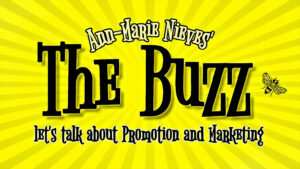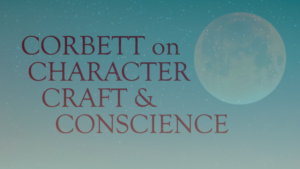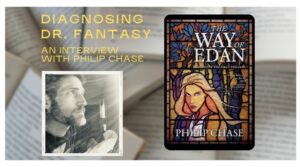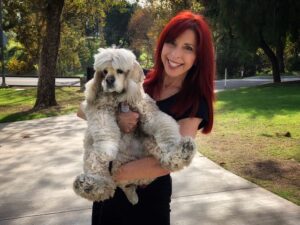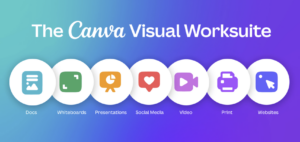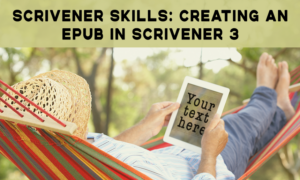self-publishing
I’ve heard many blanket statements from clients and those shopping for PR and marketing services in the past 25 years:
One that sticks out more recently, is that radio provides no value. The medium is dead they declare; only podcasts really matter.
After having lunch last week with my colleague and friend Terry Cater, co-owner of Playback Producers, a publicity production company for authors, publicists & podcasters, it seemed a good time to address the truth about radio and podcasts with someone in the trenches.
I’ve heard many a time from clients that radio is dead and podcasts are it. In the same breath, clients ask to be on NPR and a good number believe they are a perfect fit for Glennon Doyle’s podcast We Can Do Hard Things? Unpack this for us, Terry.
Radio is alive and kicking! In fact, 8 in 10 Americans ages 12 and older listen to radio – that’s according to recent data released by Nielson Media Research. Your question comes in a timely fashion – August 20th is National Radio Day. There’s a reason this medium gets an entire day of awareness. Radio has survived the test of time and is often considered a trustworthy source of information. While podcasts seem to be all the rage, there are varying degrees of the quality and listenership of the shows. A podcast can be less established with a modest listenership, less regulated, and harder to find stats (especially when it comes time to figuring out your ROI).
With that said, podcasts are great when targeting a certain audience including fiction readers. Podcasts listeners also tend to be book buyers. In general, for a successful PR campaign, I recommend securing both radio and podcasts interviews to promote your book. Radio interviews will get you conversations with hosts who have a reliable audience and established metrics. Podcast interviews are great if you have a target market. Don’t underestimate the power of radio and be specific when going after podcasts.
Who is your ideal client?
Playback Producers’ ideal client is an author who is open to an honest discussion about the interviews we can score and the PR campaign we can produce for you. While we know everyone would like to be on a top show like NPR All Things Considered or Glennon’s podcast, we want a client who will listen to our candid advice on the number and type of shows we can book. This is because not everyone will get interviewed on those coveted shows. It’s always our goal to get you the most exposure possible, but we want to manage your expectations. Playback’s been doing this for almost 20 years, so we can help steer you in the right and fruitful direction.
Read MoreIf you’re a fan of epic fantasy or of Fantasy BookTube, our guest today will need no introduction. For the rest of you, Philip Chase is medievalist with a PhD in English Literature. He has taught courses on writing, medieval literature, and fantasy literature, among other things. His special interests include Old English, Old Norse, Middle English, nineteenth-century medievalism, comparative mythology, and fantasy. Other inspirations include time spent in places like Germany, the United Kingdom, Nepal, and the Northeast and Northwest of the United States.
Those of us who are fans of his eponymous YouTube channel, which is dedicated to exploring fantasy literature, have come to know him affectionately as Dr. Fantasy (after a regular segment on his channel). Many of us have also recently come to know him as the author of The Edan Trilogy, which begins with his recent debut, The Way of Edan. I was lucky enough to get an early chance to read, and I can tell you that his expertise and dedication shine through in every sentence of this wonderful book. I’m a fan twice over!
I also had the honor of hosting the discussion below, in an effort to ascertain the root causes—and lifelong consequences—of an affliction I share with today’s interviewee: a fervent love of fantasy. Please help me to welcome Dr. Fantasy himself, Philp Chase, to WU.
Vaughn Roycroft: You and I met in the comments of your YouTube channel. You’ve gained quite a large following there (rightfully so, in this fan’s humble opinion). Can you tell us your Fantasy BookTube origin story, and a bit about how running your channel fits into your writing life? It seems the channel has been a boon to the recent release of your debut. Did you have publication or platform-building in mind from the onset? How do you see the channel fitting into your career going forward?
Philip Chase: My YouTube channel began a little more than three years ago as an attempt to enhance a course I created and had been teaching for years at my college on fantasy literature. In the beginning, I imagined the channel as a forum where my students and I could exchange ideas on readings and on fantasy as a genre. I was completely ignorant of the community of book lovers on YouTube – I had no clue what a “TBR” or “tag video” was – but was delighted to find myself suddenly in the midst of so many people who love the genre that I believe is incredibly rich and deserving of critical exploration. My channel has always been part of the same passion that feeds my teaching, my reading, and my writing. It has turned out to be a lot of work to run a YouTube channel, but it rarely feels like work because of how much I enjoy reading and discussing fantasy literature and writing. Since I recently self-published the first book in a trilogy that I’ve been working on for more than 18 years, the channel has indeed become a boon for getting the word out. I would like to continue the conversations that take place on my channel within the “BookTube” community as a […]
Read MoreKathleen Troy and Dylan
I’m very excited to present today’s Author Up Close featured writer to the WU community. I met Kathleen Troy through her publicist and have been delighted to follow her journey to publication. Kathleen is an author, movie producer, and a writing and law professor at Cypress College, but her passion is dog training. She has combined her love of writing with her love of dogs in her Middle Grade mystery series Dylan’s Dog Squad. Three books in, Kathleen’s learned a lot about the industry, including why it’s important for authors to understand the difference between publishing their work and finding distribution for it. In this Q&A, Kathleen shares lots of valuable insight, and one of the most important lessons she says she’s learned along the way: find good people who can help you achieve your goals.
GW: Thanks for agreeing to share your writing and publishing experiences with the Writer Unboxed community. I like to start by asking writers about their author origin story; it’s kind of like a superhero origin story but with a pen. What’s yours?
KT: Writing has always been a part of my life. When I was growing up, if I had a bad day at school, I just came home and wrote myself a better one. No denial there. In undergrad, I minored in journalism. My father always liked to read my stories. When he was diagnosed with cancer at forty-seven, we were told from the onset it was fatal. So when he was in the hospital, I started writing a murder mystery novel for adults. When I visited with him, I would read him a new chapter. Sadly, he died before I finished the book, and I put it away.
One night I was at a very bad play, and I told my friend that my book was better than the play. He said, “Everyone always says that.” I insisted my book really was better and decided to finish writing it. I got an agent on my first try and an offer on my first submission. I was excited until I learned the offer was to sell the novel outright. It would no longer be mine. I really, really wanted to be published but I turned down the offer. I’d written the book for my father, and I realized that I didn’t want to sell a memory.
GW: You write Middle Grade fiction, and specifically, you’ve written a series about a group of friends and their dog, Dylan, solving mysteries together. How did the idea for the series come about?
KT: The Dylan’s Dog Squad Series is largely based upon Dylan, an American Cocker Spaniel, and his true-life experiences, adventures, and training.
In the series, Casey’s brother Aiden, an American professor living in South Korea, bought Dylan but got frustrated with the dog and sent him to Casey, his twelve-year-old brother in California. Casey is thrilled to have a dog, his mother less so. Casey and Dylan have thirty days: Casey to learn the responsibilities of dog ownership and Dylan to learn to be a good dog—or else. They form an inseparable bond, are never apart, and, in each book, they continue to grow as a unit.
The idea for the […]
Read MoreIn a recent email from author Emily Kimelman, she laid out a whole new model for self-publishing that I found especially intriguing, and I thought the Writer Unboxed community would as well.
Emily is the best-selling author of two series—the Sydney Rye mysteries and the Starstruck thrillers—as well as the Kiss Chronicles urban fantasy series under the name Emily Reed. Spending her early years in the Soviet Union (her father was a foreign correspondent for the Philadelphia Enquirer), she caught the wanderlust bug at a young age and has traveled the world from Mongolia to Costa Rica to Spain and beyond, and she often bases her books on her experiences abroad.
(Personal note: Emily is also my wife’s best friend, and they’ve been “sisters from different misters” since they met at age twelve while attending The Baldwin School in Bryn Mawr, Pennsylvania.)
I recently invited Emily to share her publishing experiences and her unique new venture with our readers.
Why did you originally decide to self-publish?
In 2005, I was in my twenties and coming up with my life plan.
I wanted to write mystery novels because I enjoyed reading them, and writing them seemed like the most fun way to make a living.
I researched how to support myself as an author and decided I’d write a stunningly good book, get an agent, then a publisher. Then they’d take it from there while I wrote in cafes around the world with my dog sleeping peacefully at my feet and my fingers clacking away on my keyboard.
I did write a stunningly good book (it took 5 years), and I did get an agent …but the rest didn’t fall into place until I became my own publisher.
I’m entrepreneurial by nature and watched the self-publishing market emerge from a shameful little corner of the internet into a powerful force traditional publishers were ignoring. So in 2011, when my agent still hadn’t sold my book, I figured I had nothing to lose by going indie.
How have you monetized your books – in particular, share with our readers “how it works” with Amazon.
Retailers like Amazon pay between 30-70% royalties depending on the cover price.
While self-publishing gives authors more control and higher royalties than traditional publishing, retailers don’t share any data—like who bought your books. You’re basically a wholesaler who is allowed to set the retail price.
Also, Amazon runs ads for other products—and books—on your titles’ pages which makes sending your readers there kind of a gamble—they can easily be distracted before clicking the buy button.
How did this part of your career go?
It went great! And I still sell my books on all major retailers.
The better I became at advertising and promoting myself, the more money I made. But I also started to understand how disadvantaged I was compared to others’ selling digital products online.
When you’re spending multi-five figures on ads, and not getting any data from your traffic, you’re paying to give Amazon a lot of customers.
The first month I grossed six figures and retailers kept 35%, I knew it was time to move toward direct sales.
BookFunnel, a delivery service for ebooks that indie authors use to send out ARC copies and reader magnets, integrated with Shopify and other sales platforms a few years ago. But until […]
Read MoreIn talking with other writers, especially those early in their journey, I’ve often said that talent isn’t the most important thing. Talent, for the most part, is not actually what gets you published. Talent is great, don’t get me wrong, and your journey toward holding your published book in your hands will be easier if you have some. But plenty of talented writers write a great book and then, poof, it goes nowhere. They don’t succeed, and they quit.
I’m sure you see where this is going. The quitting is the problem. Far more important than talent is persistence.
So persistence is the most important thing. Nobody can stop you from being published but you. You keep trying, and you keep going, and you work hard, and maybe it takes three months or maybe it takes twenty-three years, but if you can stay with it despite rejections, setbacks, and maybe even some outright failures, you can make it happen.
But would it surprise you that talent isn’t even the second most important thing?
I was thinking about this as I dove back into the draft of the third novel in my epic fantasy series The Five Queendoms. Writing fantasy wasn’t in my original plan. Actually, writing four historical novels under the name Greer Macallister wasn’t in my original plan either — those of you who know me know there was actually a name before that and a novel before that, one that had little in common with my best-known and most successful work. It was published and I was thrilled, but sales were poor, and it became clear I wasn’t going to sell a book under that name again.
So the plan changed. Greer Macallister happened, and I’ve had nothing but success under that name, having a fabulous time writing historical fiction centered on extraordinary women. But then I got this “feminist Game of Thrones” idea I couldn’t shake, and the plan changed again: not leaving behind my historical fiction career, but branching out from it, adding on. Greer Macallister writes historical fiction and G.R. Macallister writes epic fantasy. It was an idea and now it’s a reality.
Persistence is the most important thing. But right behind it? Is flexibility.
When you’re pregnant, they highly recommend you come up with a birth plan, covering everything from when and whether you want to be offered an epidural to what music you want playing in the delivery room. But anyone who’s been through it knows that when push comes to shove (as it were), that birth plan goes out the window. There are just too many variables. You can’t control all the things you would need to control in order to follow that plan to the letter.
Your writing career is like that. You can and should plan for it: what do you want to write? How do you want to publish? But persistence doesn’t mean sticking to that plan come hell or high water. You need the persistence to see things through, but you also need the flexibility to figure out that if things aren’t working the way you want, you’ve got to find another path forward.
Q: Has your writing career required flexibility? Do you agree it’s almost, but not quite, as important as persistence?
Read MoreWhether you’re an indie, trad, or unpublished writer, you can benefit from turning your manuscript into an ebook. Here are several reasons you might want to:
So, let’s talk about how to create your very own EPUB 3 file in Scrivener 3. First, make sure you’ve set up your section types under Project>Project Settings>Section Types, and assigned them as needed (see this post for a review).
Unless you’re trying to get fancy, creating a good looking ebook can be super quick and simple. Follow along below to create your own.
Choosing Your Format
The first thing you need to do is tell Scrivener what kind of file you’re creating. Here’s how:
NOTE: There are very few settings that you need to “hard code” into an ebook. For example, the font is mostly irrelevant since the viewer can change the font on their e-reader. E-readers will retain relative size (e.g. between headers and main text), but the person reading can also enlarge or reduce overall text size, so the base font size also doesn’t matter. Italic and bold fonts are retained, just like with other output types. Most modern e-readers support highlighting, bullets, images, text color, and hyperlinks, but they may appear different than in Scrivener.
Choosing Your Content
In the right-hand column, make sure you’re viewing the Contents pane. If not, click the Contents button at the top (looks like a bulleted list).
Select the checkboxes for the files in your manuscript that you want to include in the output.
Assigning Section Types
Be sure that the section type for each file is correct. If you have a file that’s an exception to the defaults you set in Project Settings, you can change it by clicking the dropdown menu under the Section Type column heading.
Section Types appearing in gray italics have been automatically assigned based on your rules in the Project Settings. Those you’ve changed manually are listed in black, regular text.
Adjusting the Look
Click the Assign Section Layouts button in the center column to ensure that each of your section types has the desired layout applied to it.
To assign a section type to a section layout, do the following.
Modifying MetaData
Click the MetaData button at the top (looks like a luggage tag) and make sure your name and book title are correct.
If desired, fill in the Subjects (e.g. retailer keywords) […]
Read More
Please join us in welcoming Victoria Strauss to Writer Unboxed as a new regular contributor. Victoria is not only a multi-published novelist and author of short stories, she is the voice of Writer Beware–a group dedicated to empowering writers by unmasking writing scams and schemes. We’ve been fans of Writer Beware and Victoria Strauss for as long as we’ve existed here as a site, and we could not be happier to have her as a member of the WU team. Welcome, Victoria!
When I do presentations and Q&As, I’m often asked to name the most common scheme or scam writers need to watch out for.
Usually, I have to think a moment before I answer—not just because the universe of writer-focused predation is constantly evolving (for instance, there are far fewer fee-charging literary agents now than there were when Writer Beware was founded), but because the ways in which writers can be tricked and exploited are so many and various that it’s hard to choose.
These days, though, I can respond without hesitation. By far the most prevalent writer-focused scams are solicitation scams.
Solicitation scammers contact writers out of the blue with publishing-related offers that seem too good to be true. A literary agency is interested in your work! A prestigious publisher wants to acquire your book! A film producer wants to turn your novel into a movie! A marketing company can expose you to millions of potential fans!
You know the old adage, though: if it sounds too good to be true, it probably is. In reality, these offers are not about boosting your career or raising your profile. Whatever enticing carrot a solicitation scammer may dangle before you, the real aim is to get your money.
Solicitation scams and schemes are not new. Back in the days of snail mail, costly print vanity publisher Dorrance Publishing was notorious for soliciting submissions from copyright registration and magazine subscription lists. (Dorrance has re-tooled itself for the digital age, so its solicitations now come via email.)
Profiteering contest and awards programs have also long been prolific solicitors (for instance, J.M. Northern Media, which runs multiple high-entry-fee “festivals”), as have bogus Who’s Who registries. Predatory author mill Omniscriptum regularly solicits submissions to its many imprints, and if you write nonfiction, you may have been contacted by Close-up TV News, a pay-to-play “news” program that has been chasing customers for nearly two decades.
Over the past three years, though, the volume of solicitations has exploded, driven by a huge rise in publishing-related scams from overseas, and also by the pandemic, as in-person networking and marketing opportunities for writers have dwindled and online activity has increased. Self-published and small press authors are the solicitors’ favorite marks. But any writer can be a target.
WHAT YOU MAY ENCOUNTER
Fake Literary Agents and Agencies
Real, reputable literary agents—whose inboxes are overflowing with submissions and who have no need to solicit clients–rarely reach out directly to writers they don’t already represent. For scammers, on the other hand, cold-call solicitation is their main recruitment method. And large numbers of them are posing as literary agents and agencies.
Fake agency solicitations typically involve strategically […]
Read More
